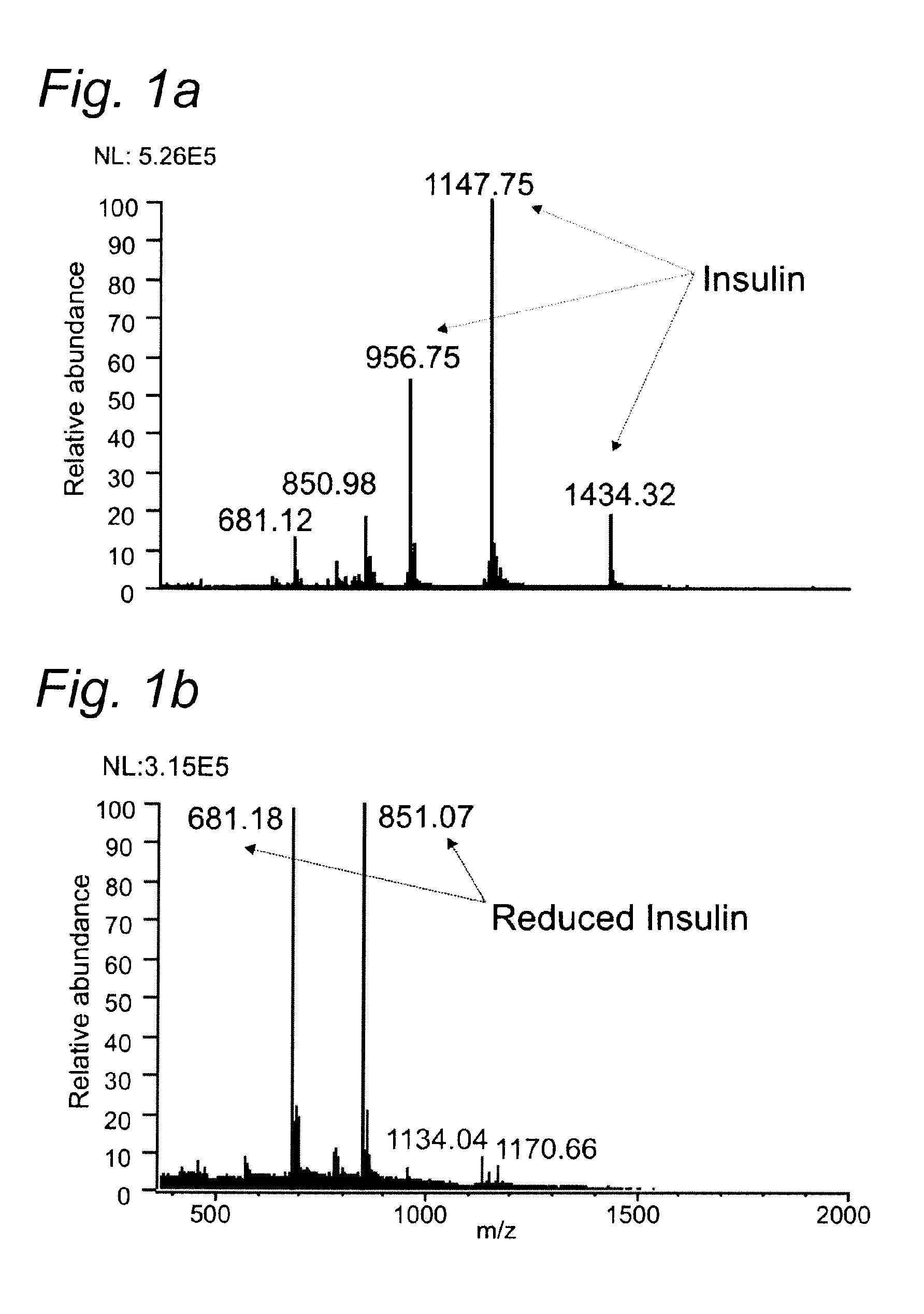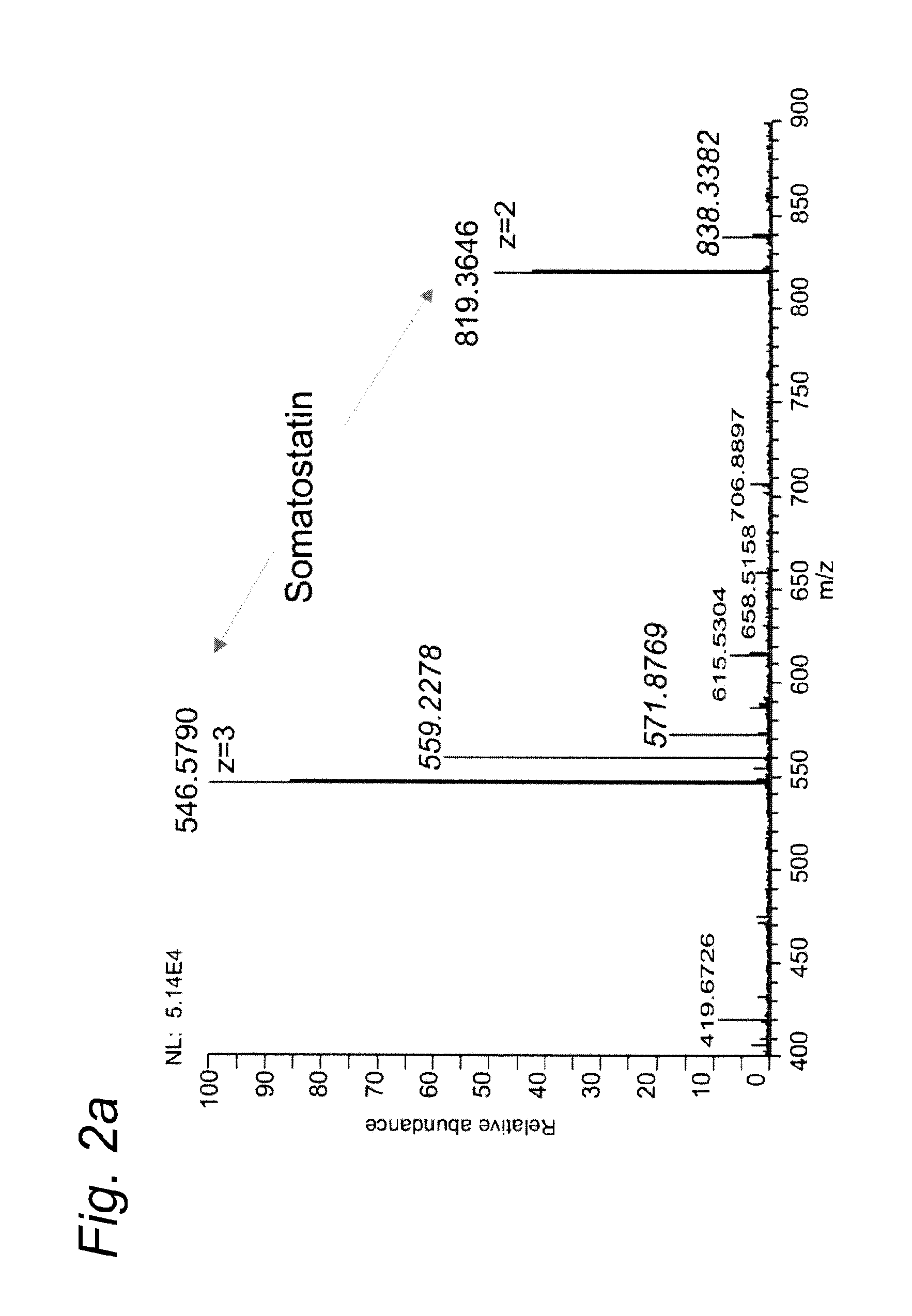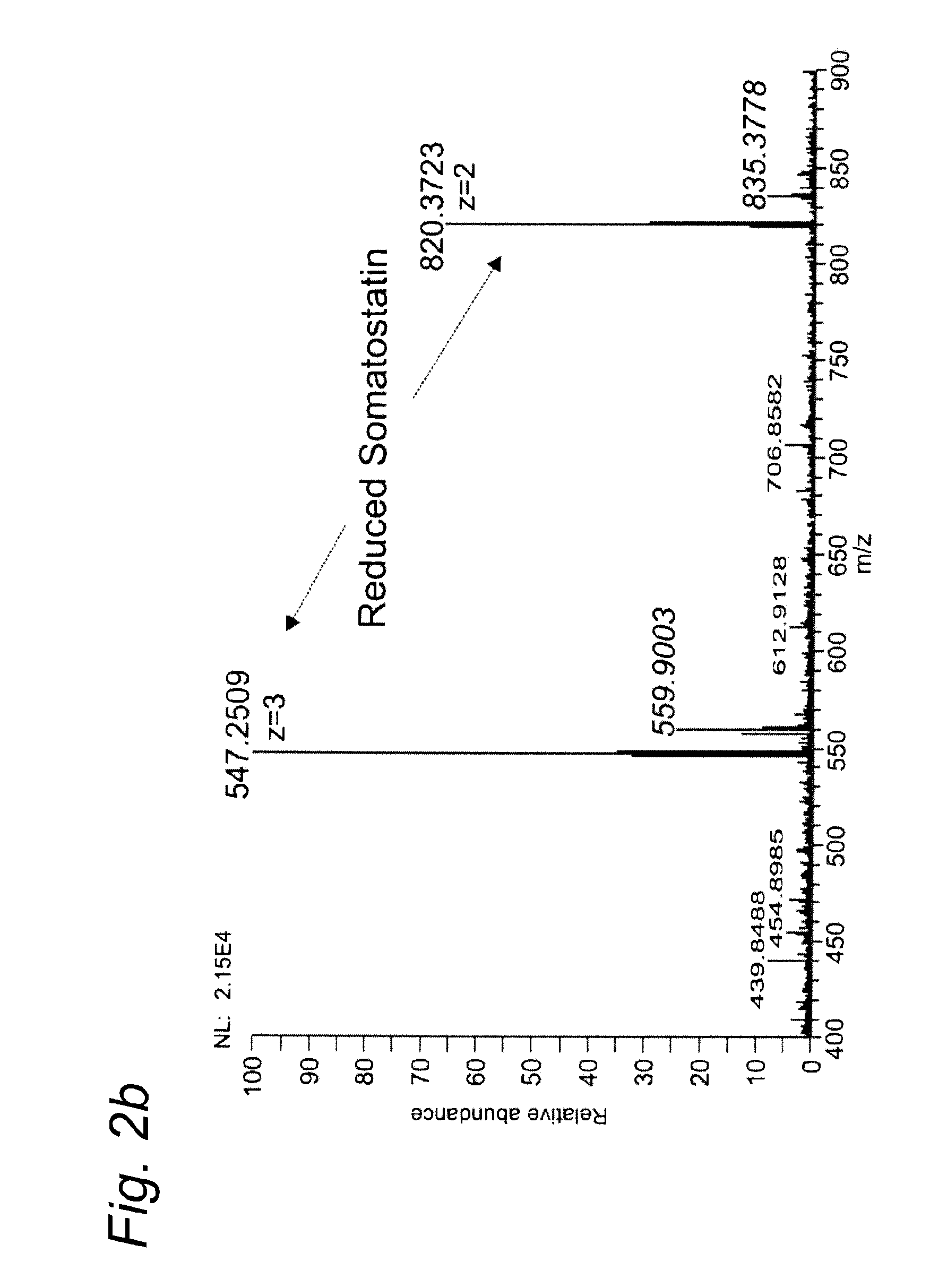Electrochemical reduction of disulfide bonds in proteinaceous substances and electrochemical cell for carrying out such reduction
a technology of proteinaceous substances and disulfide bonds, which is applied in the field of electrochemical cell for carrying out disulfide bond reduction and electrochemical cell for carrying out such reduction, can solve the problems of increasing the complexity of protein structure elucidation, increasing the charge number of resulting protein ions, and laborious type of reduction, so as to achieve fast, stable and substantially complete reduction of all disulfide bonds
- Summary
- Abstract
- Description
- Claims
- Application Information
AI Technical Summary
Benefits of technology
Problems solved by technology
Method used
Image
Examples
example 1
[0085]To demonstrate the performance of the titanium working electrode in the reduction of disulfide bonds in peptides and proteins prior to MS detection insulin (Bovine pancreas) was used as a model compound and the result was compared with a previous approach using conductive diamond working electrode (Y. Sun, P. C. Andrews and D. L. Smith, Journal of Protein Chemistry, 1990, 9, 151-157).
[0086]Insulin consists of 51 amino acids forming two chains, A and B, and contains 3 disulfide bonds. Two interchain disulfide bonds connect chain A and B and one intrachain disulfide bond is located on chain
Reagents
[0087]Insulin from bovine pancreas and formic acid (99%) were obtained from Sigma Aldrich (The Netherlands).
[0088]Acetonitrile (99.9%) was obtained from Acros organics (Belgium).
[0089]All these reagents were used as received without further purification.
[0090]Deionized water (18.2 MΩ·cm) used for all experiments was obtained from a Barnstead Easypure II system (ThermoFischer Scientific...
example 2
[0098]Example 1 was repeated, except that this time somatostatin was used as the test substance. Somatostatin 14 was purchased from Bachem (Switzerland).
[0099]Somatostatin, a 14 amino acids peptide is a release-inhibiting factor which has one intrachain disulfide bond that maintains the cyclic structure. Insulin is a hormone produced by the pancreas.
[0100]Table 1 summarizes the theoretical m / z values for somatostatin and its reduced forms.
TABLE 1SomatostatinSomatostatin reduced[M+3H]3+546.5795547.2514[M+2H]2+819.3656820.3734
[0101]Somatostatin was completely reduced and, furthermore, a decrease in the potassium adducts was noticed (FIG. 2), a positive side effect of the electrochemical process.
example 3
[0102]a lactalbumin was used as a test compound using the set-up described in Example 1 to cover a higher molecular weight protein. The α-lactalbumin from bovine milk was obtained from Sigma Aldrich (The Netherlands)
[0103]α-Lactalbumin contains 123 amino acids (counting the lactose synthase subunit). The globular structure of α-Lactalbumin is stabilized by four disulfide bonds: Cys25-Cys139, Cys47-Cys130, Cys80-Cys96, and Cys92-Cys110.
[0104]As a result of the reduction of larger proteins such as α-lactalbumin, a shift in charge stale distribution was observed. This effect indicates the conformational change of the protein due to the reduction of disulfide bonds and can result in accumulation of larger number of charges on the surface of the protein (FIG. 3).
PUM
| Property | Measurement | Unit |
|---|---|---|
| distance | aaaaa | aaaaa |
| volume | aaaaa | aaaaa |
| diameter | aaaaa | aaaaa |
Abstract
Description
Claims
Application Information
 Login to View More
Login to View More - R&D
- Intellectual Property
- Life Sciences
- Materials
- Tech Scout
- Unparalleled Data Quality
- Higher Quality Content
- 60% Fewer Hallucinations
Browse by: Latest US Patents, China's latest patents, Technical Efficacy Thesaurus, Application Domain, Technology Topic, Popular Technical Reports.
© 2025 PatSnap. All rights reserved.Legal|Privacy policy|Modern Slavery Act Transparency Statement|Sitemap|About US| Contact US: help@patsnap.com



